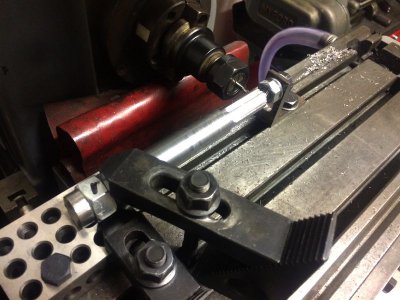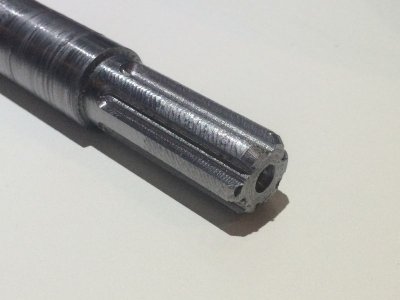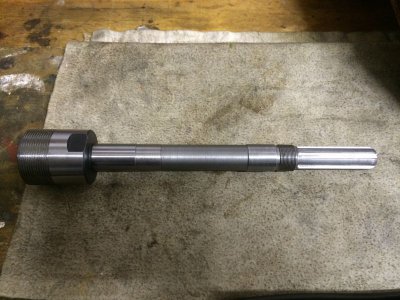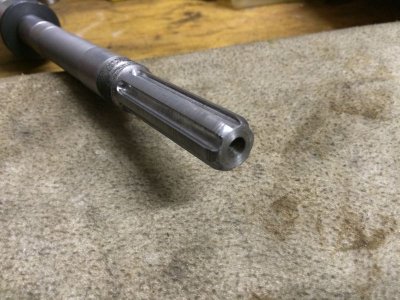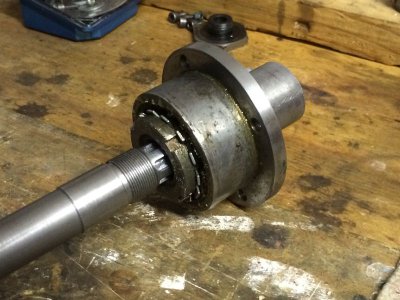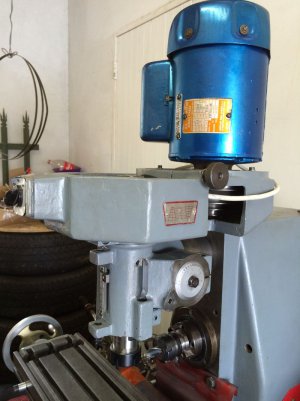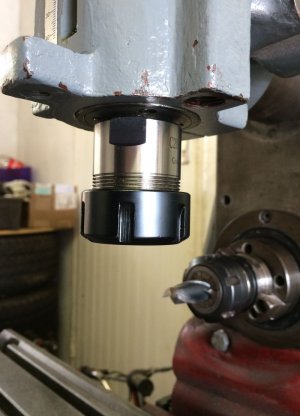- Joined
- Jun 26, 2014
- Messages
- 619
Did some digging and came across this method of straddle milling the splines which made sense to me as you form both sides of the tooth in one pass, then just tidy up the bottom of the groove.
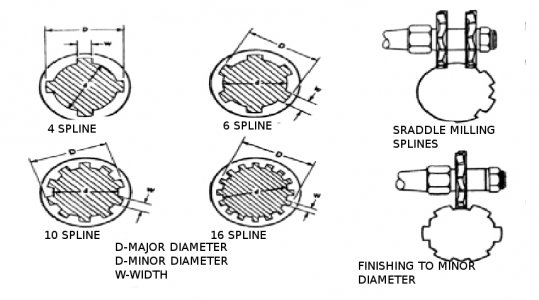
I don't have two similar size slitting saws but thought I could do the same thing with two angle grinder disc. So I made up a shaft and spacer to hold the two disc the required distance apart - also turned up a dummy shaft to practice on as I didn't want to experiment on the spindle.
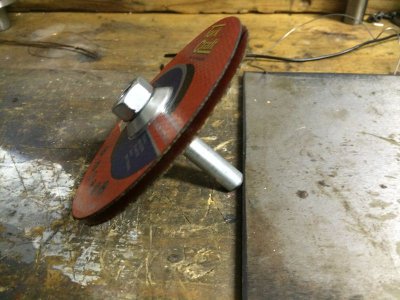
Turns out the 1mm disks are not ridged enough and flex too much. 3mm discs were not much better and the 'tooth' tended to get wider as the spline got further up the shaft - so a failure. May of worked if the spacer in the middle and the collars on either side had been larger in diameter, like 90% of the disc diameter to provide more support, but it still appeared the disc were wearing unevenly so the sides of the tooth became less vertical over time .
So it was a fun day in the shop but not very productive in the end - and back to the idea of milling each slot with three passes.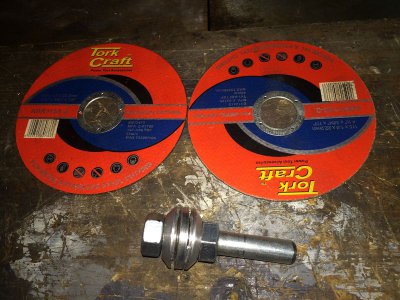

I don't have two similar size slitting saws but thought I could do the same thing with two angle grinder disc. So I made up a shaft and spacer to hold the two disc the required distance apart - also turned up a dummy shaft to practice on as I didn't want to experiment on the spindle.

Turns out the 1mm disks are not ridged enough and flex too much. 3mm discs were not much better and the 'tooth' tended to get wider as the spline got further up the shaft - so a failure. May of worked if the spacer in the middle and the collars on either side had been larger in diameter, like 90% of the disc diameter to provide more support, but it still appeared the disc were wearing unevenly so the sides of the tooth became less vertical over time .
So it was a fun day in the shop but not very productive in the end - and back to the idea of milling each slot with three passes.



